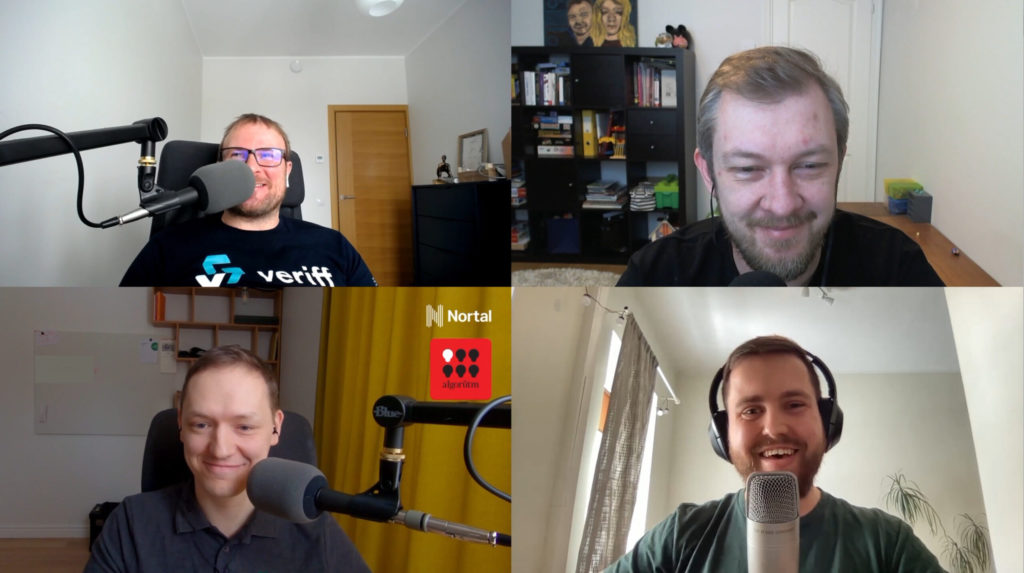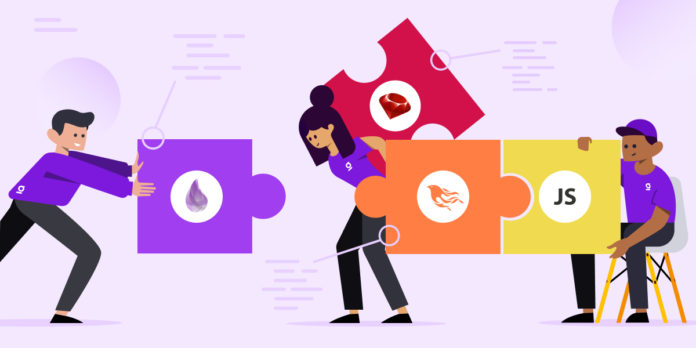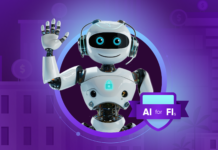How our engineering department works to deliver award-winning Digital Customer Service technology.
At Glia, we’re on a mission to delete “How may I help you?” from the customer service dictionary. We think that for our clients to provide exceptional Digital Customer Service to their customers, they should already know the answer to that question.
We’re going to apply this you-shouldn’t-have-to-ask philosophy to ourselves and give you some insights into how we work—starting with engineering.
We’re a tech company that focuses on reinventing customer service for a digital world. Our engineering teams are shaping a customer service category so new we can’t even say we’re disrupting it—we’re creating it. Let’s get to the core of how we’re able to do that.
Engineering culture at Glia
Our core values and principles are at the center of everything we do across the company. They guide the way we approach our work and in many ways speak to what it means to be a Glianeer. This remains true for our engineering team as well.
Collaborate
We like and admire the people we work with—they’re seriously smart and fiercely supportive. So our rituals and interactions (like stand-ups) aren’t just about what you’ve done and plan to do; they’re also about your challenges and asking for help in approaching them. At any given point, you know for a fact that your team has your back. We co-create, and the outcome is greater than the sum of its parts.
Challenge
Engineers at Glia are as driven as they are smart. We like to figure things out, so doing something “just because” doesn’t sit well with us. We don’t have architecture and code reviews just to ensure a solution will work; we hold each other accountable for the quality and performance of what we deliver.
We ask tough questions and give each other walk-throughs of the thought process. We won’t bat an eye when you come in on your first day and say, “I’m not sure that’ll work the way you think. What if we do it like this?” We’ll discuss it—likely we’ll passionately debate it with a level of curiosity that allows us to listen intently and ask the right questions—getting us to agree on the solution that holds up. Once we make the call and start executing, we are all in. This fundamental openness to new ideas and perspectives leads to clean, maintainable, and scalable solutions and systems.
Master
This is where our drive manifests—the need to understand why something is being done the way it is (see: challenge) and then creating the best possible solution. When working on a problem, our engineers know why it’s an important one to solve, why now, and what alternatives have been explored.
That deep drive to understand is everywhere. We’ll come together to learn new languages or read a book. Sometimes it’s for mob programming sessions, a way to experiment while practicing a language someone may be working to master. We dedicate ourselves to our learning by setting personal quarterly OKRs, because seeing progress isn’t just helpful. It’s a point of pride.
Curiosity and learning build the confidence and ability to implement based on our ever-evolving knowledge and skills. We use that base to execute beyond expectations, putting our focus on creating—and constantly improving—a product that’s not simply functioning, but pleasant and effortless to use.
Persevere
We’re determined to achieve our goals, whether they’re personal challenges or company-wide initiatives. Every obstacle is an opportunity to learn (and we do love that). That’s why we don’t shy away from experimenting—without taking unnecessary risks.
Once we have a goal in mind, we’re relentless. Like when we decided to re-architect a critical piece of our real-time messaging engine to better support the scaling of our customers and our business. Over two years our engineers worked on carefully replacing, improving, and updating each piece of the architecture—piece by piece. The tedious work was being done while the platform was already live, powering communication for a few of the biggest financial institutions globally. The effort included replacing a Node.js stack for Elixir and Phoenix, which helped us to support significantly larger workloads. Despite multiple setbacks along the way and the need to adjust our plans as we went, we never took our eyes off of what was important—and got it done.
The hurdles we face may be inherent or self-imposed, but we persistently work together to solve them. We’re all co-owners of the company—so our perseverance pays off for clients and for us.
Co-founder and CTO Carlos Paniagua is particularly proud of two other—unwritten but unquestionable—aspects of the engineering team: honesty and transparency.
“What you see is what you get… not trying to sugarcoat anything. And I think that goes a long way. It creates trust, everybody feels safe to be true and honest—even if that’s hard sometimes.”
– Carlos Paniagua, CTO, Glia
That honesty is at the root of what empowers Glia’s engineering team to be so successful—to date, we’ve enabled 10B+ customer service interactions for some of the world’s biggest organizations.
Having a basis of honesty and trust is what creates the space for the team to share opinions and feedback, challenge each other to do better, learn as we go, and persevere through obstacles.
How we organize ourselves to deliver award-winning, patented technology
We’re building a platform that enables our clients to rethink the way they serve customers. That may sound simple on the surface, but it combines multiple communication channels, CoBrowsing, AI technology, and a customer service agent application (say that three times fast).
And offering it all means building and maintaining it all. Did we mention most of our clients are in the financial and insurance (read: famously compliance and regulation-heavy) sectors?
So it shouldn’t be a surprise that our approach is thought-out, systematic, and tailored. We’re building something unique—off-the-rack solutions won’t do. As our Director of Engineering Deiwin Sarjas shared with the hosts of Algorütm, Estonia’s flagship developer podcast, our organizational changes are often the result of learning from experiments.

Over the years, we’ve experimented with team setup and shaped an approach that is poised to serve us well as we continue scaling. Today, we build new teams by expanding one team and then dividing it. This engineering team mitosis allows for growth that provides initial structure and support to new Glianeers while ensuring continuity of technical and cultural standards. If we find that two teams are starting to overlap in their responsibilities, we designate that area of responsibility to one of the teams, freeing up the other to shift their focus.
Some teams focus on who’s being served by the product. For example, one team’s focus may be on the end-user (our client’s customer), while another team’s North Star is the customer service agent for whom Glia’s technology is mission-critical. Other teams are organized around operational management or analyzing business metrics—providing our clients with a full range of Glia products.
Of course, we wouldn’t function without our platform teams. They build the infrastructure to enable all the development and keep everything running smoothly. Meanwhile our Information Security and Compliance Team makes sure that our platform is secured and our customers’ data is protected.
We encourage creative problem-solving, while keeping our platform reliable and secure to serve some of the world’s leading financial services organizations. It’s one thing to come up with something new from scratch, but it’s a very different level of creativity that can continuously innovate on something existing. These teams empower the rest of the organization to keep innovating, ensuring that the infrastructure can support any new implementations and adjustments our highly-skilled engineers come up with.
How to grow with Glia’s trajectory
We’re not a new kid on the block. We’ve been keeping our heads down, validating, building, testing, refining, getting patents, and winning awards—and now we’re ready for the next phase. The Glia technology that many potential clients saw as being a good investment “someday” quickly became something businesses needed to survive in the pandemic and beyond. That means the demands to deliver and integrate Glia solutions are only beginning.
What that means for our engineering team is clear—growth. But here’s the thing: We are careful not to sacrifice our culture for speed. We’ve fine-tuned our hiring and onboarding to ensure that new Glianeers don’t just come in to check boxes and fill seats. We look for people who can live by and add to our values. People who choose to become Glianeers do it because they’re looking for professional challenges and see that path through the thorough and honest insights in our hiring process.
Once onboard, the knowledge of our organizational context and earnest support pave the path to success in their role. For example, while Ruby and Elixir are key languages we use, not all new Glianeers need to be fluent in them. We’ve designed structures for learning, from courses to consistent support from Engineering Managers. Glianeers are the ones who decide the best approach to learning, like one of our Senior Engineers who’s diving into Elixir. Ultimately, we aren’t here only to build a product. We’re also creating an environment for each of us to develop further (pun intended).
Beyond mastering an initial role at Glia, career development moves along two distinct tracks—Technical and Management. The management track spans from an Engineering Manager role to Senior EM, up to leadership positions such as Director and VP. On the technical track, engineers can hone their skills and grow beyond senior positions into Staff and Tech Lead roles.
The Engineering Manager role, while requiring an understanding of software creation, is a people role. Partnered with a Tech Lead, the two roles are focused on the two drivers of engineering team success—the people and the tech. The work is a partnership, but the responsibilities are clearly defined. Meanwhile, our Staff Engineers serve as roving Glia-engineering experts. Their in-depth specialization, whether technical or organizational, allows them to lend their support and know-how to the teams as needed.
The tools for building tech that excites
Back-end and full-stack developers at Glia can expect to work on building a cloud native, highly distributed system written in Elixir (backed by Postgres and NoSQL stores, like Redis and S3). Services run as containers orchestrated by Kubernetes. All of it is on AWS and defined in code (e.g. Ansible). As such, Linux/Unix tools and ecosystem are part of the package.
On the front-end side, the stack includes an JS API written in JS ES6 and Web applications written in React. Meanwhile, our mobile developers collaborate with other engineers to develop and maintain native SDK. Android engineers function with Java, while iOS developers do so with Swift. A few tools for observability and telemetry include ZipKin (open tracing) and an ELK stack to increase confidence in our continuous delivery process. Our engineers can move fast without breaking things.
We’re proud of Glia and the work our world-class engineering team has done to get us here. And we’re not stopping any time soon. If you want to create the new standard for customer service technology and our approach to engineering sounds like a fit, check out our open positions.





